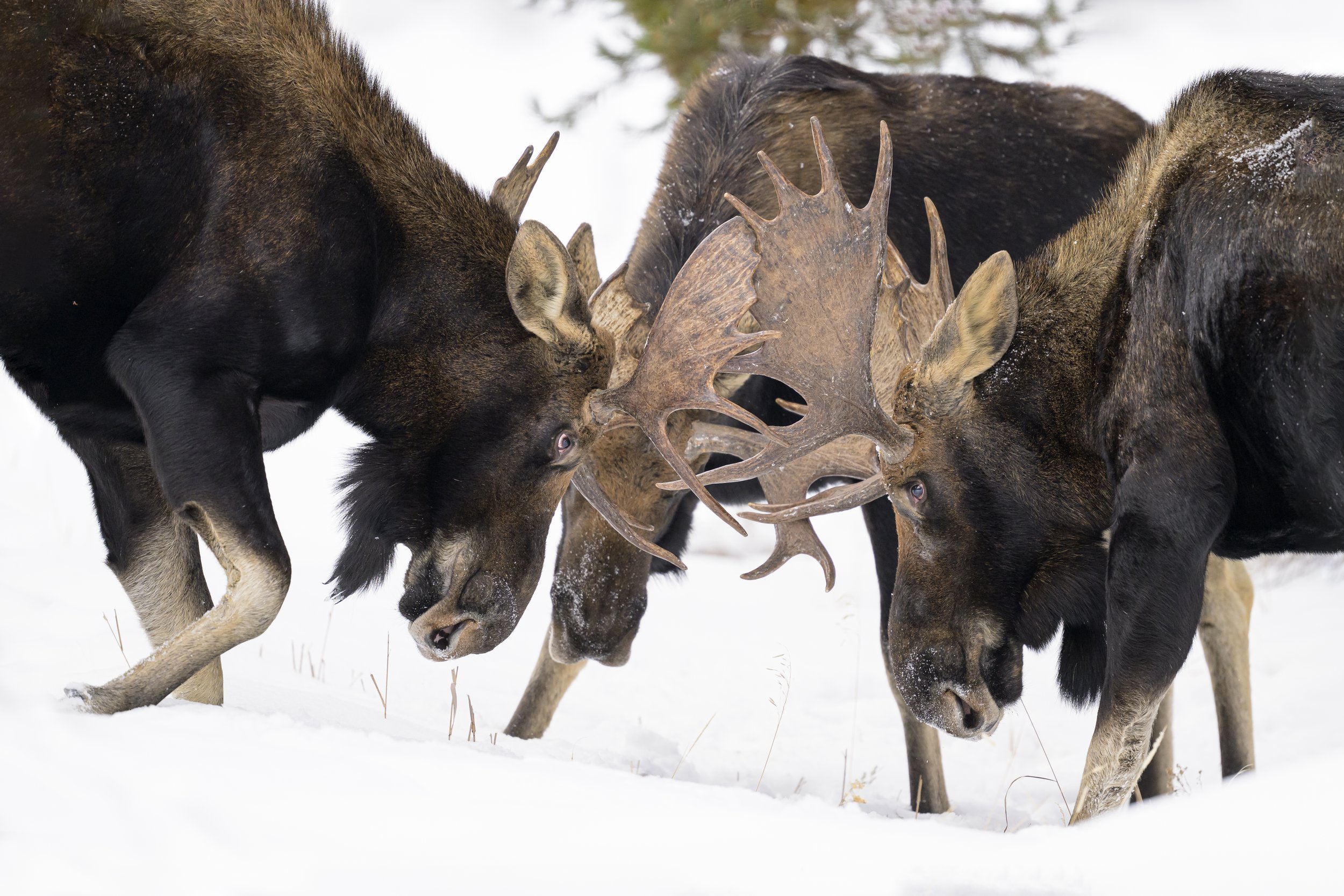
Icons of the North
Moose and Great Gray Owls of the Tetons and Yellowstone
Grand Teton and Yellowstone National Parks need no introduction for wildlife photographers. This landscape is both the American Alps and the Serengeti, rolled into one; a wilderness where where predators and prey still play out their ancient rhythms in the largest intact ecosystem in all of the Northern Hemisphere. But while most photographers come here chasing the diversity of Yellowstone’s megafauna, this workshop takes a different path. It narrows its focus to two of the most elusive and iconic species in the lower 48: moose and great gray owls.
Late October, the final week before Yellowstone’s interior roads close, marks an extraordinary and often overlooked window of time. The crowds are gone, the air turns crisp, and the snows are beginning to accumulate across the mountains. Bull moose are transitioning out of the rut and toward early winter browse. After nearly a month of battle, these brutes begin to gather in numbers for safety from predators as their lick their wounds. But just because the rut is over doesn’t mean that old rivalries are forgotten. The hormones that fueled a complete obsession with breeding and fighting just weeks before still linger. And bull moose can be found sparing with each other throughout the day - something that is rarely seen, let alone photographed, during the rut.
With winter just around the corner, great gray owls intensify their hunting this time of year. For these owls, the early snows of autumn bring about lean times. Great gray owls are no stranger to life in the boreal forests, and their adaptations for hunting red-backed voles in deep snow is the stuff of legend. But until a subnivean zone forms beneath snow, which requires at least 8 inches of stable snow pack, these birds must work very hard to make a living. Late fall, therefore, often provides wildlife photographers one of the most productive times of the year for finding and photographing these birds across the Greater Yellowstone Ecosystem.
By focusing entirely on two subjects, we create space for something that’s increasingly rare in modern wildlife photography: depth.
Professional wildlife photographers and natural history cinematographers all approach their craft in this manner, hyper focused on specific species when in the field. But this is not to the exclusion of other opportunities that present themselves, of course. Grizzly bears are in hyperphagia and working to consume 30,000 calories a day, bighorn sheep are just beginning to descend from the lofty perches atop mountains, elk have flooded across Jackson Hole by the thousands, pronghorn are beginning their migration and are on the move, and mule deer are entering their rut.
The Basics
Dates:
October 24-31, 2026
Participants: Limited to 6
Price: $6500
Deposit: $2000
Classroom Session: We will spend a full day in a classroom session discussing the important photographic concepts needed to take full advantage of this workshop. From low light photography to understanding how to find owls, this classroom session is designed to insure that each participant is fully prepared for the opportunities to come. This one day will completely change your success rate for the entire workshop.
Physical Difficulty: Moderate – some hiking through sagebrush
Skill Level: Beginner to Advance
Lodging: All lodging is included in single rooms
National Park Fees: Included
Airport: Jackson Hole Airport (JAC)
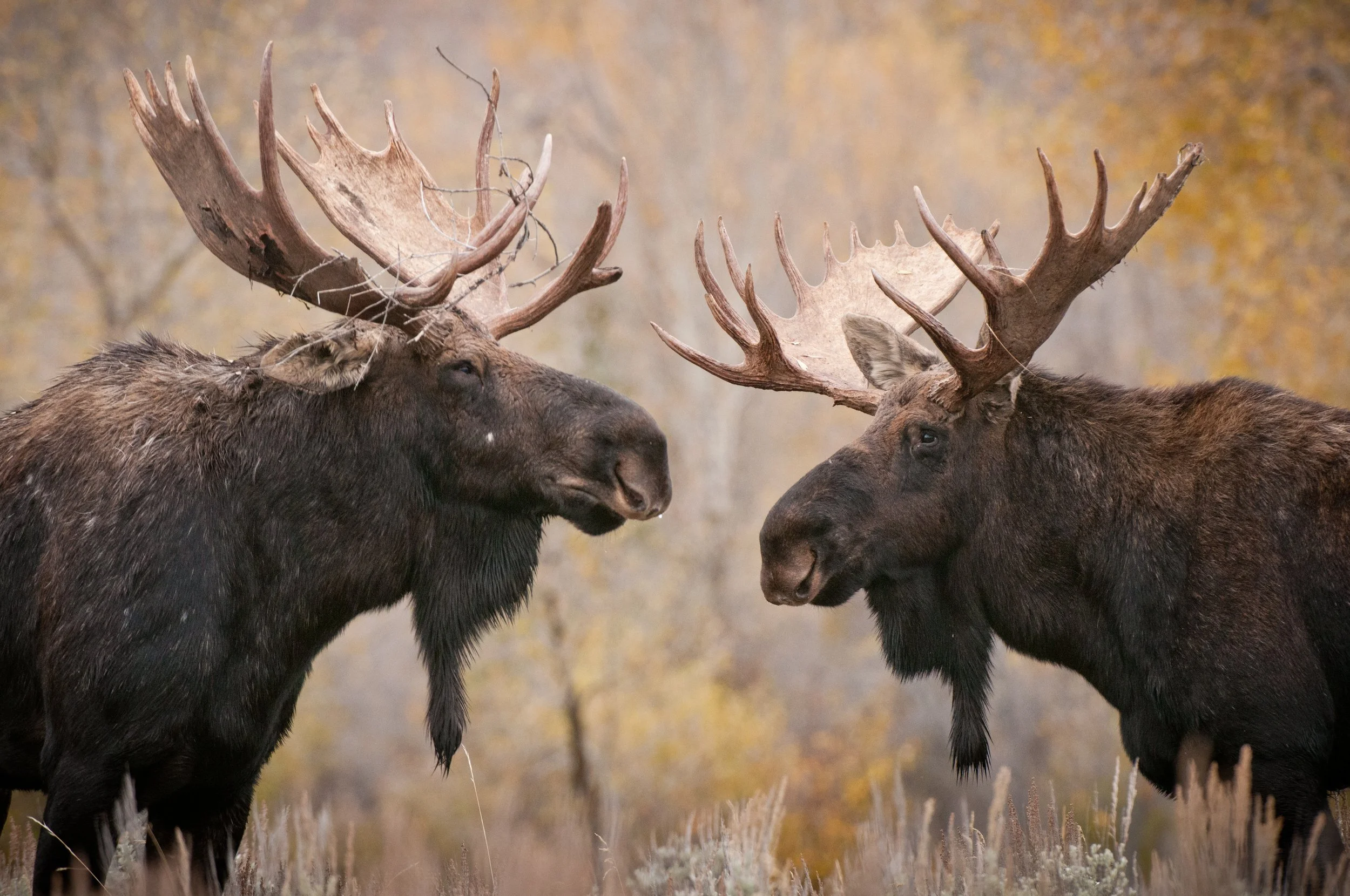

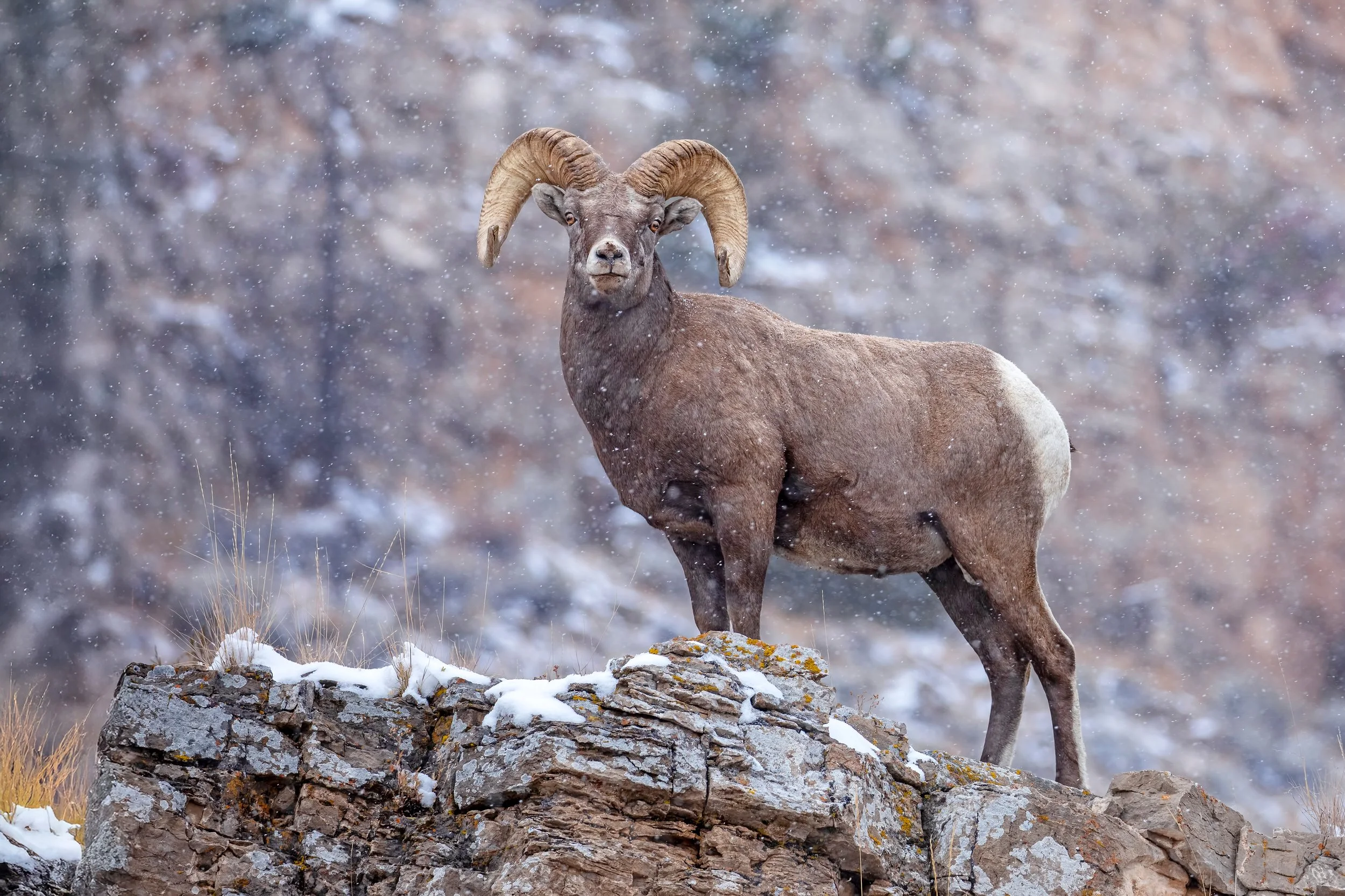

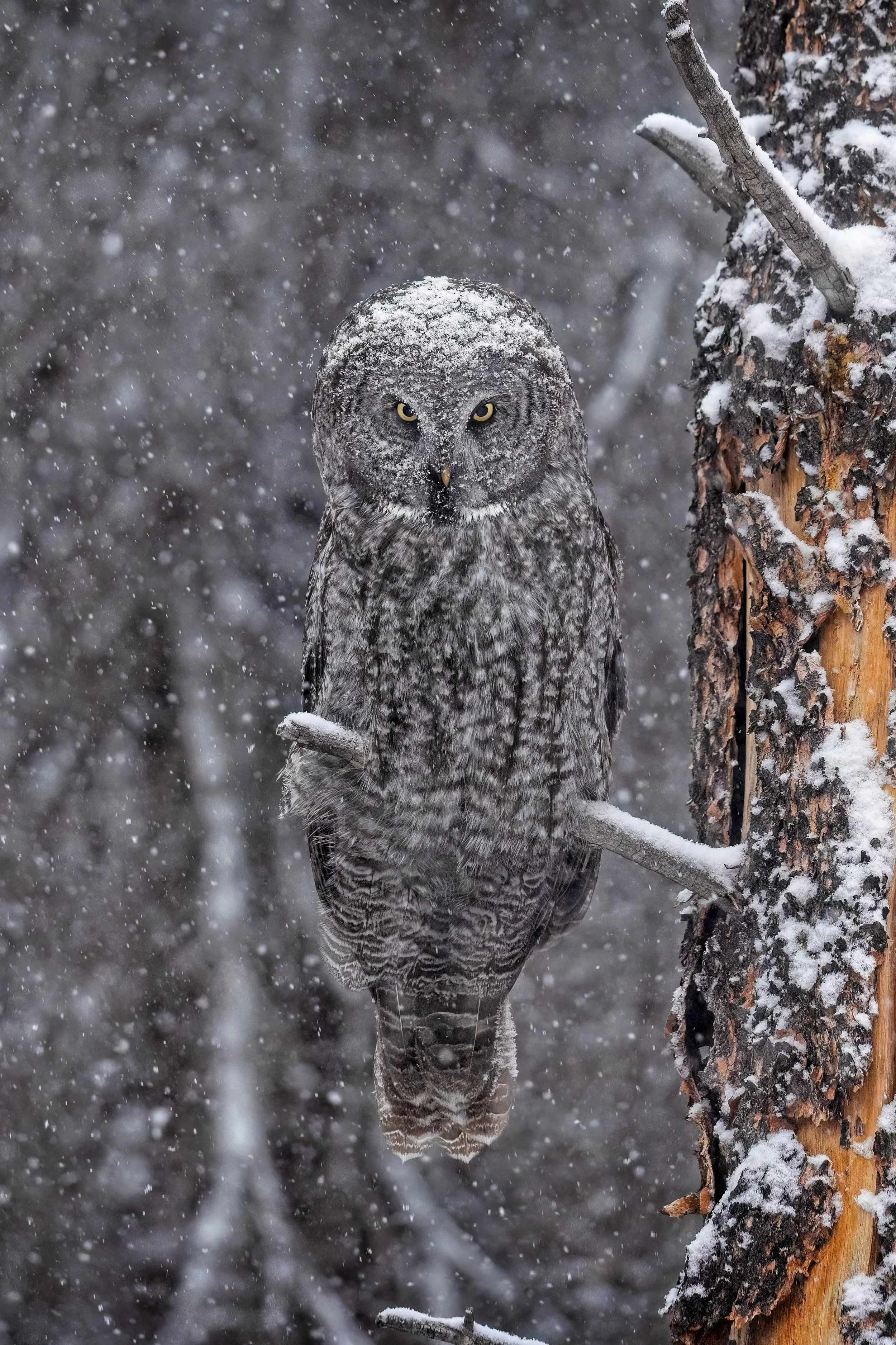

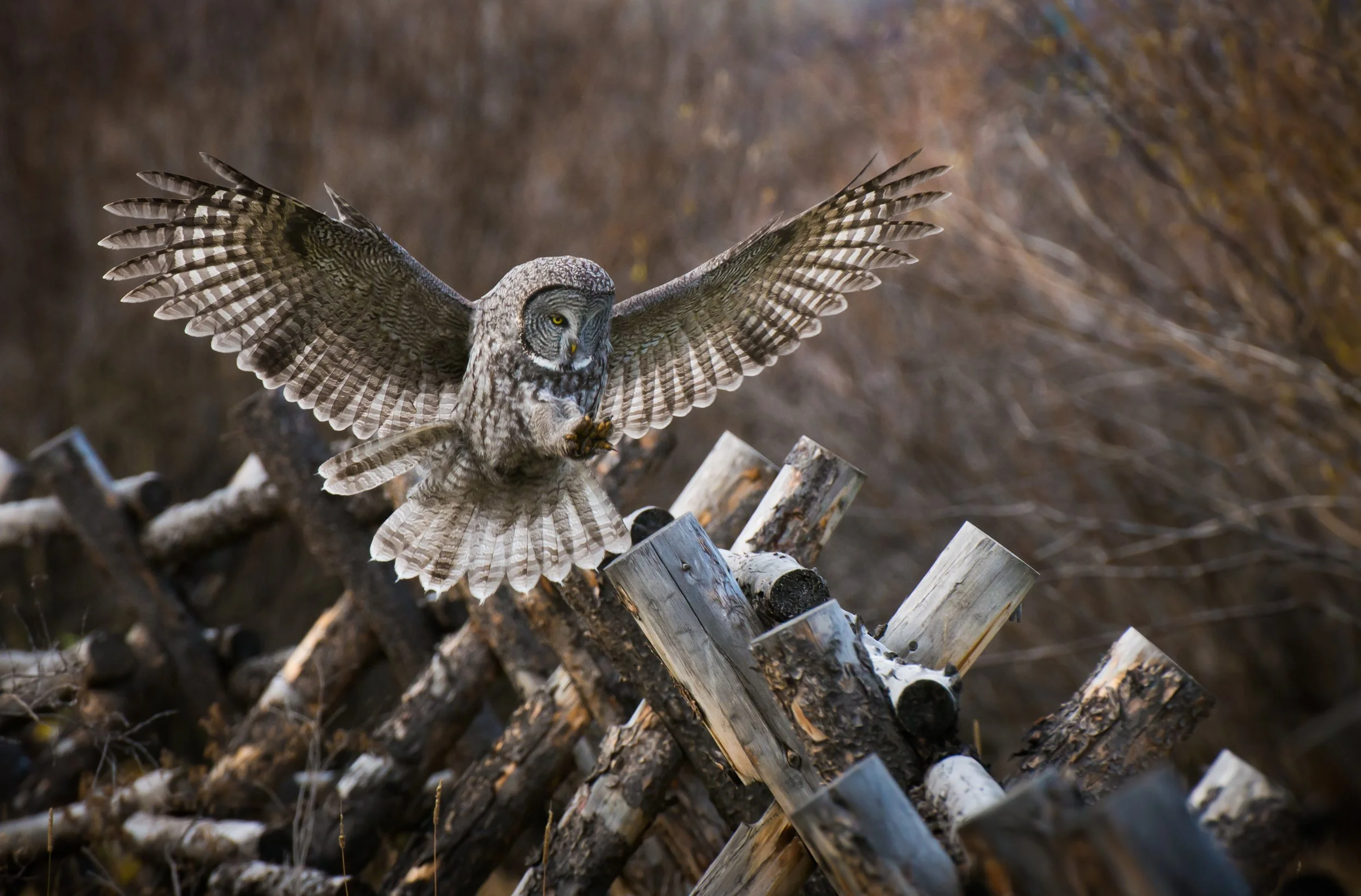
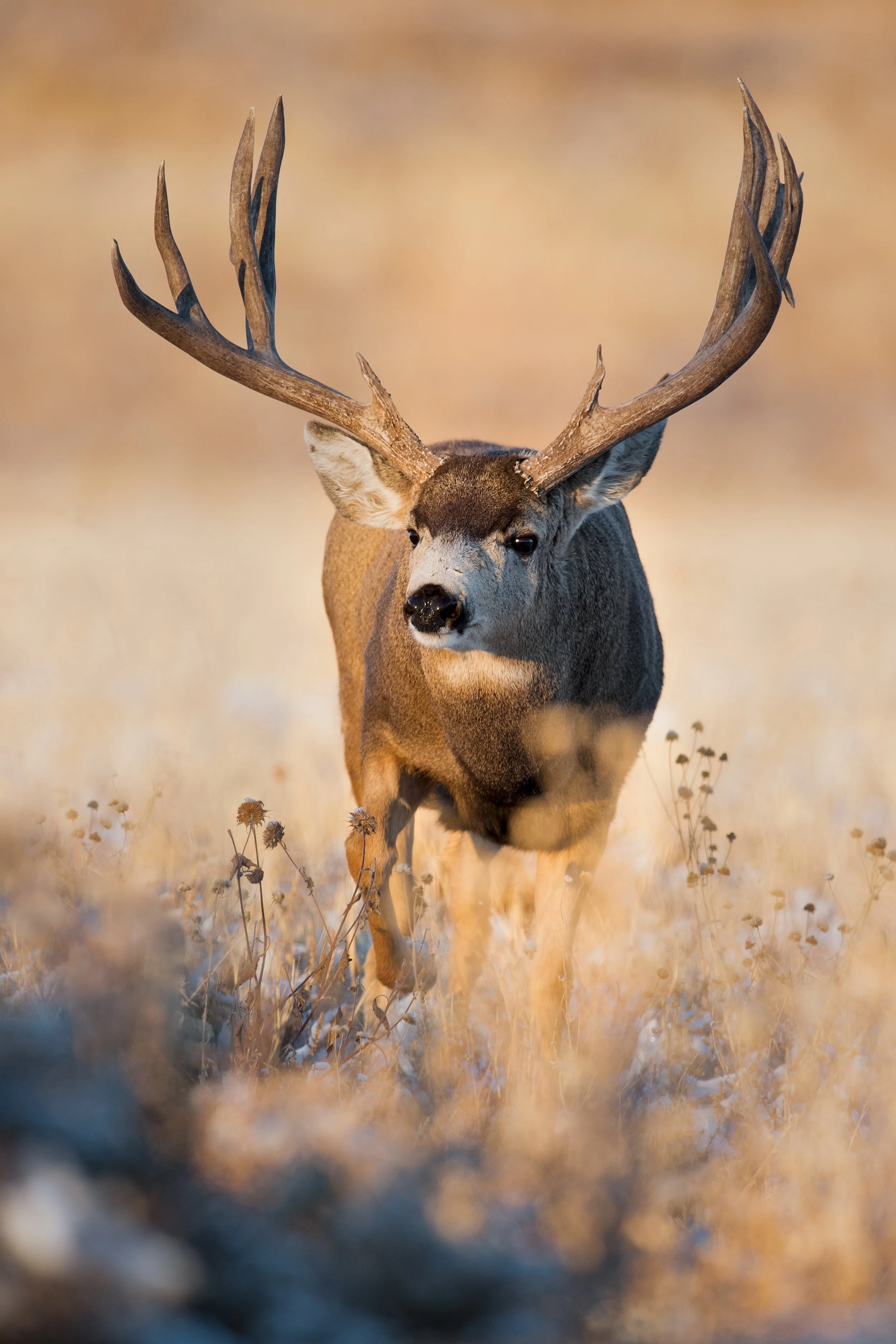
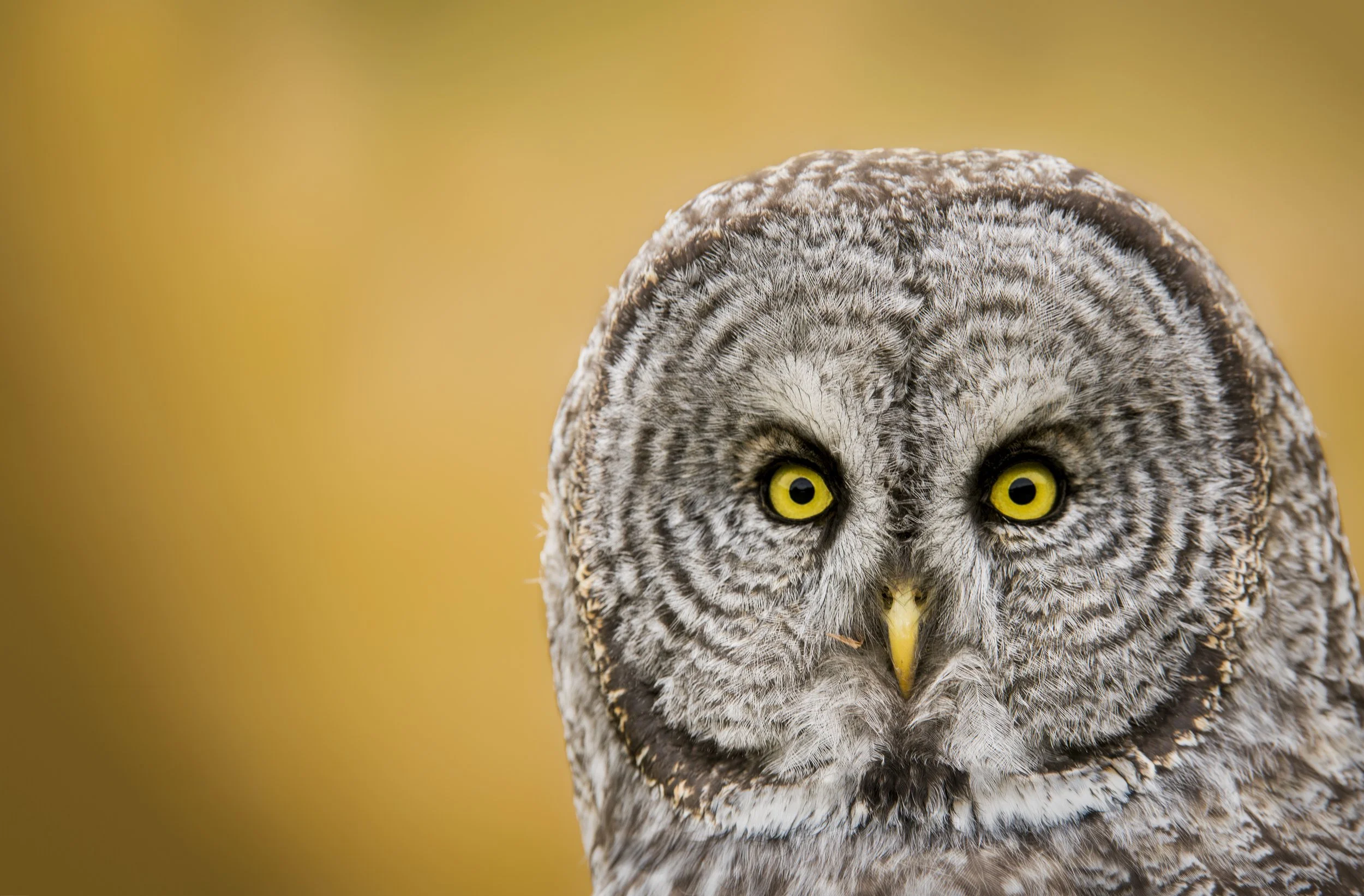

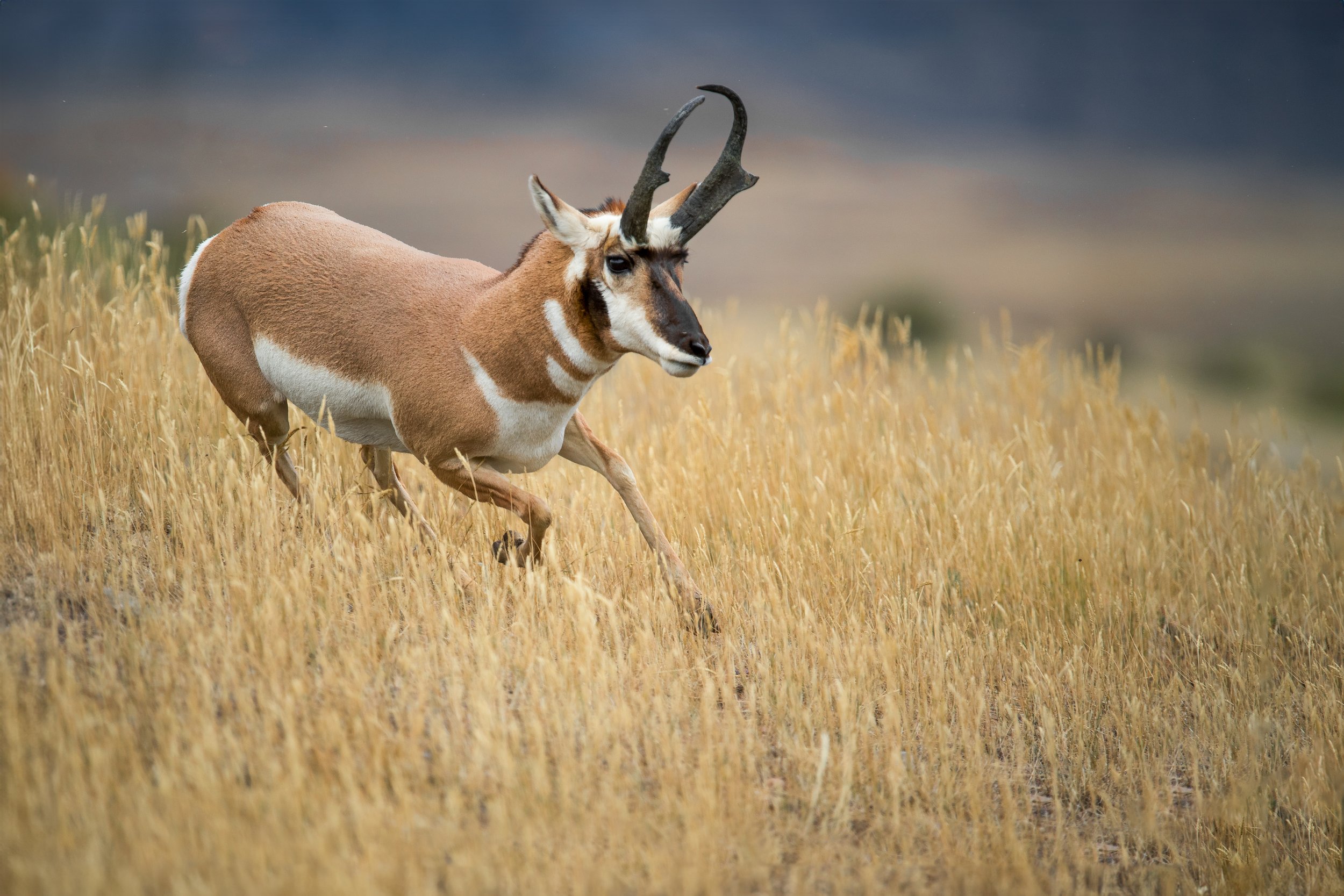


Experience Highlights
A targeted workshop experience focusing on on two of the most iconic species of the Greater Yellowstone Ecosystem
A deep dive into the biology and natural history of great gray owls and moose
The opportunity to photograph in the national parks when visitors are at a statistical minimum, allowing closer and more intimate encounters
A chance to go beyond the traditional photography hotspots in the park
Hands on photography instruction to ensure you are setup for success when the opportunity of a lifetime presents itself
Moose and Owls Itinerary
Day 1:
Arrive in Jackson Hole, Wyoming. Transfer to hotel. This evening there will be an official meet and greet.
Day 2:
This is a classroom day. Photographing around large and potentially dangerous animals requires understanding wildlife behavior and communication. Photographing in falling snow also comes with its own unique challenges. On this day, we will do a deep dive into everything you need to be prepared to take full advantage of this workshop. From working with low light to autofocus strategies that will be needed for the particular situations we plan to photograph in, this classroom day will ensure you are ready for the week ahead. However, what makes wildlife photography different from all other genres of photography isn’t camera settings: it’s the fact that we are working with wild animals. So, moving beyond the technical side of the craft, this day will also be spent discussing how we find and locate great gray owls, why moose will be predictably in certain locations, and the nuances of working with these and other species we are likely to photograph along the way. Many participants tell us that this single day of the workshop is worth the price of admission by itself.
Days 3-7
The rest of the week will be spent working between Grand Teton National Park and Yellowstone National Park. Due to the nature of wildlife photography, every location decision is made at the time. A foot of snow may send us in one location for the morning, whereas a sudden warm spell is likely to send us to an entirely different place. As wildlife photographers, we base these decisions on the natural history and biology of the species we are working with and the photographic opportunities that the weather patterns present us each day.
Day 8:
The last day of the workshop is a travel day. You are free to leave from Jackson Hole Airport (JAC) whenever you would like.
Workshop Leader
Scott Suriano is an award-winning wildlife and nature photographer based in Baltimore, Maryland. His work has earned recognition from the National Audubon Society, Bird Photographer of the Year, Nature’s Best Photography, and the Chesapeake Bay Foundation, among many other leading institutions.
Over the past decade, Scott has built a reputation for creating evocative imagery that captures the character and presence of his subjects. His work blends precision and a deep sense of visual storytelling together, qualities that have made him both a celebrated photographer and a respected instructor.
Scott has guided multiple PhotoWILD Workshops alongside Jared Lloyd in Alaska’s bear country, where his calm approach and intuitive understanding of animal behavior help participants develop the skills that great wildlife photography demands.
@sasphotography67
Selected Reading List







